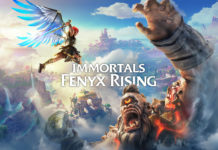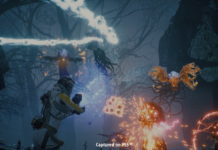The
world of card gaming is expansive and popular. There is a rash of games that
encompass the gaming concept and utilize it well, but few give the genre more
than a cursory look.
Then
there is Yu-Gi-Oh! Worldwide Edition Stairway to the Destined Duel, a Konami
release for the Game Boy Advance. This game is the sequel to The Eternal Duelist
Soul, but is touted as a worldwide addition simply because it is available in
six languages.
The
game concept is rather basic. You have a deck of cards, and are in a zone in a
city. You must travel from zone to zone, battling other duelists in the
turn-based game. As you go, you collect cards, assemble your deck and take on
tougher opponents. Through the use of static screens and scrolling text, you are
told of other tougher duelists, some of whom prey upon the weak, and you move
along against the increasingly tougher AI.
Other
than the six different languages, other game features include 150 brand new
cards, which increase the total of cards available to more than 1,000. The cards
are the key to the game. In each duel, you are given a zone, which features your
deck, the playing zone (this is separated into two categories, for support and
attack cards), and your discard area.
The
cards themselves come in three main classes: Monster (which is further broken
into normal, fusion, ritual and effect categories), Magic and Trap. Monster
attributes are similar to other games in that they are based on elements –
earth, water, fire, wind, and then light and dark. There are 20 monster types
and six magic/trap effects.
The
order of duels is determined by the rock-paper-scissors. Each battle has several
phases – the main phase in which you set up your deck, and then attack (battle)
phase. Once you are done with your turn, your opponent goes through the same
process.
This
game will allow players to compete against other players via the GameLink.
The
graphical elements of this game are static and while the screens have some
detail, some of the type of the platform is incredibly small. Don’t expect to be
enthralled with the game’s look. This is about card battling, and though the
program tries to hype the ensuing action, it does not do a good job of that. The
strength of this game lays in the battles, how you strategize and play your
cards (which also incorporates a randomness for while you can create a deck, the
draw in the game is generally random).
The
game lacks an in-game tutorial, and newcomers to the genre may find themselves
scratching their heads and wondering what it is they are supposed to be doing.
You will need to familiarize yourself with the game’s basic before venturing
forth, rather than relying on screen prompts. This game does have a learning
curve of 30 minutes.
What
sound there is here is rather poor and among the most basic 8-bit audio
renderings on the market.
Yu-Gi-Oh!
is not the kind of game that everyone will embrace. This game is predicated on
those who like the cerebral challenge of card-driven chess in a static
environment. This is not a reflexive challenge. That said, what this game does
offer are battles that can last two minutes or 20 minutes depending on the fall
of the cards and how you use them. That is where the game’s enjoyment lays.
Gameplay:
6.5
The
static quality of the game, the mapboards and scrolling text are basic, and this
game is fraught with minor load times.
Graphics:
6.8
The
static nature of the game suits the style of play, and the actual artwork has
the anime flair many enjoy, but this game has some very basic qualities, and the
battles are nothing short of unspectacular. This is a thinking game, not an
action-packed bit of eye candy.
Sound: 6
Typical
8-bit sound that is better left turned down.
Difficulty: Medium/Hard
Grasping the game concepts may take a bit for those unfamiliar with the genre,
Learning how to play the cards to your best advantage will take time and is
challenging. The AI doesn’t evolve so much as your opponents just get tougher
the further you move from your starting base or zone.
Concept: 7
This
game has added a few nice elements, but the star is the protracted card battles.
Multiplayer: 7.5
Players
can trade cards and compete head-to-head via the GameLink cable.
Overall:
6.8
This
game will not stun players with its graphical qualities, but rather is a
challenging mental outing which incorporates both random chance and some
strategic card play. There is a nice variety of cards to choose from and each
battle can last for a long time if the cards are well played. But that may not
be enough to make this a strong enought reason to do anything other than rent
this game.









